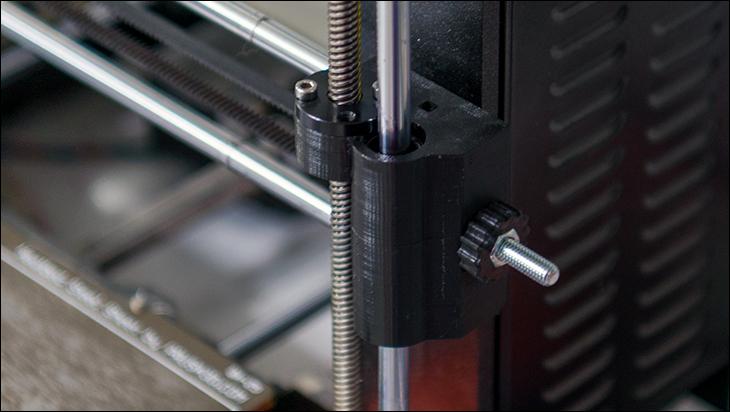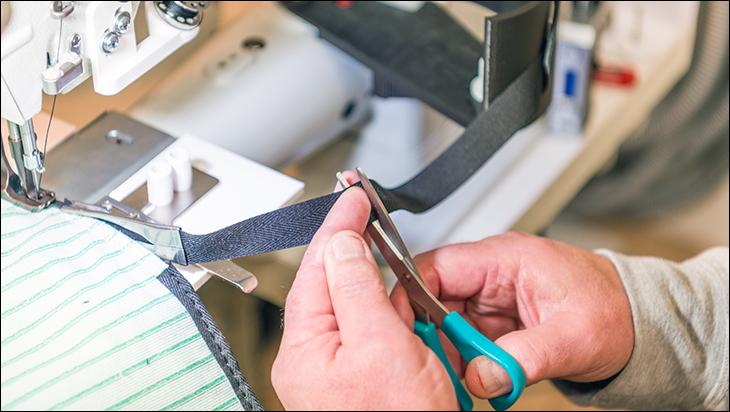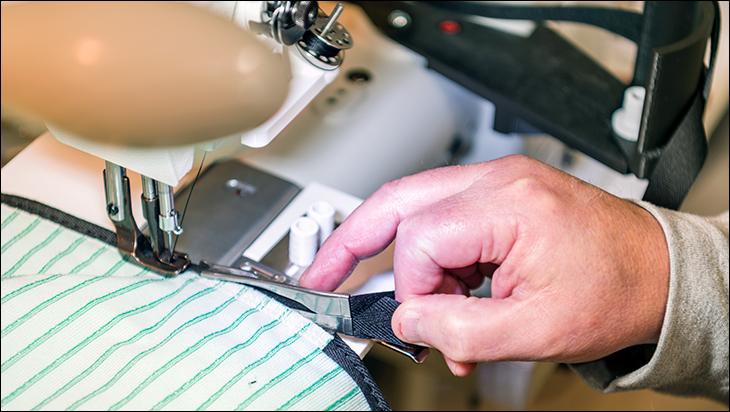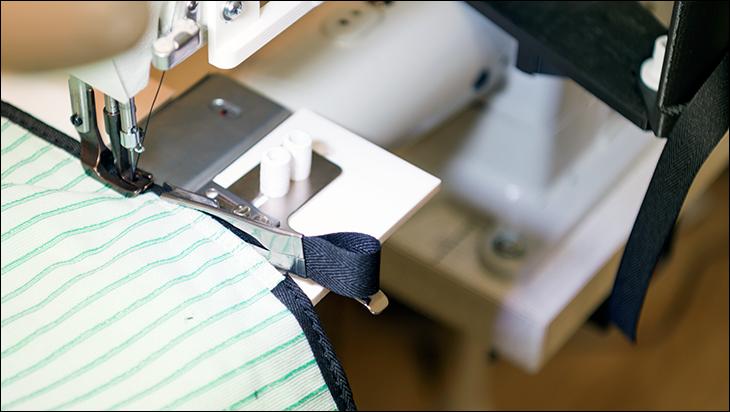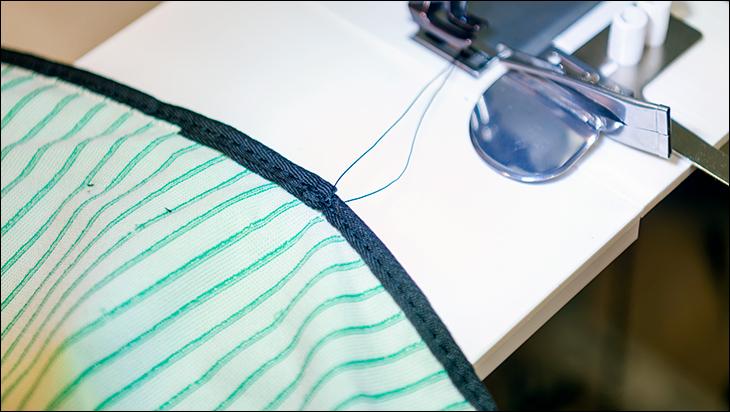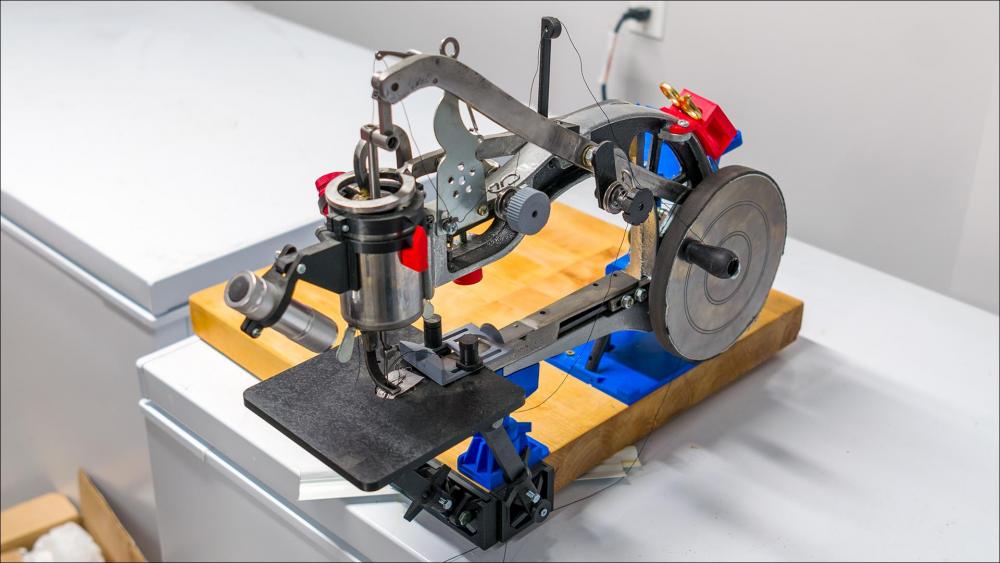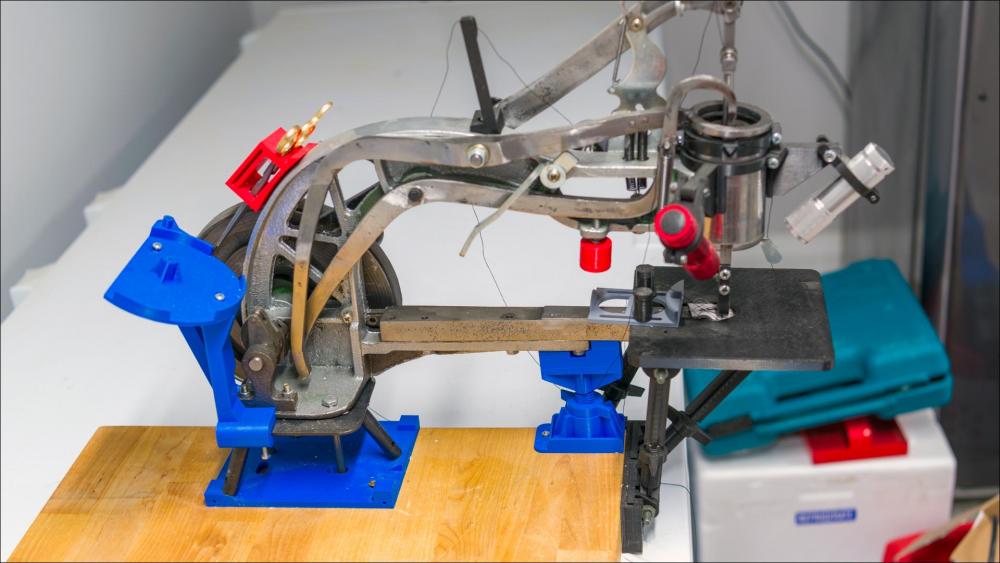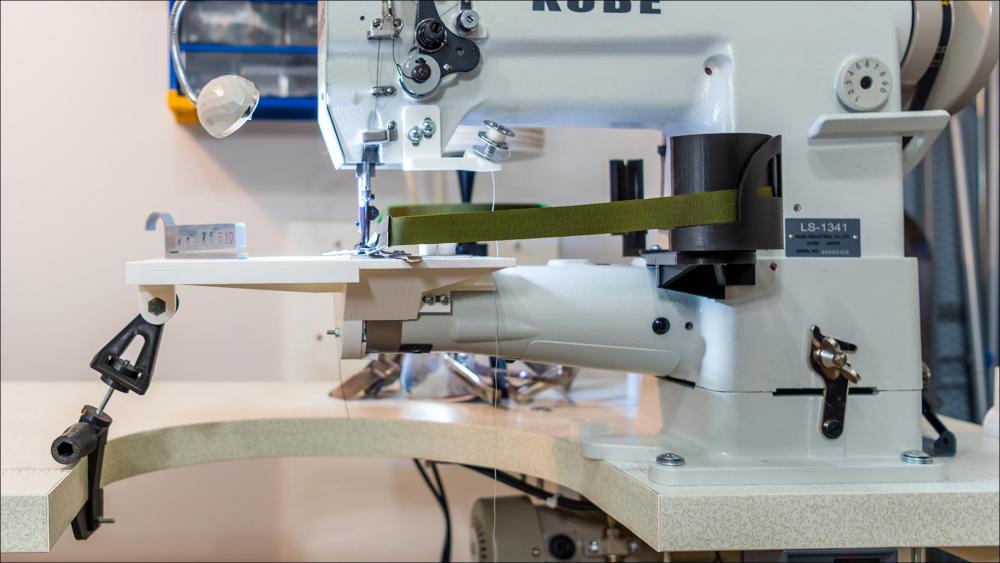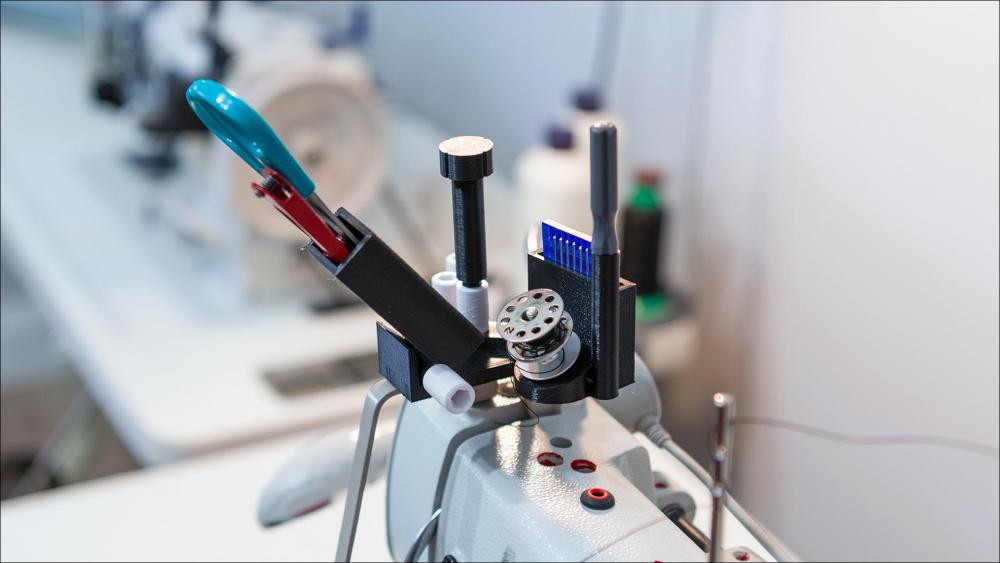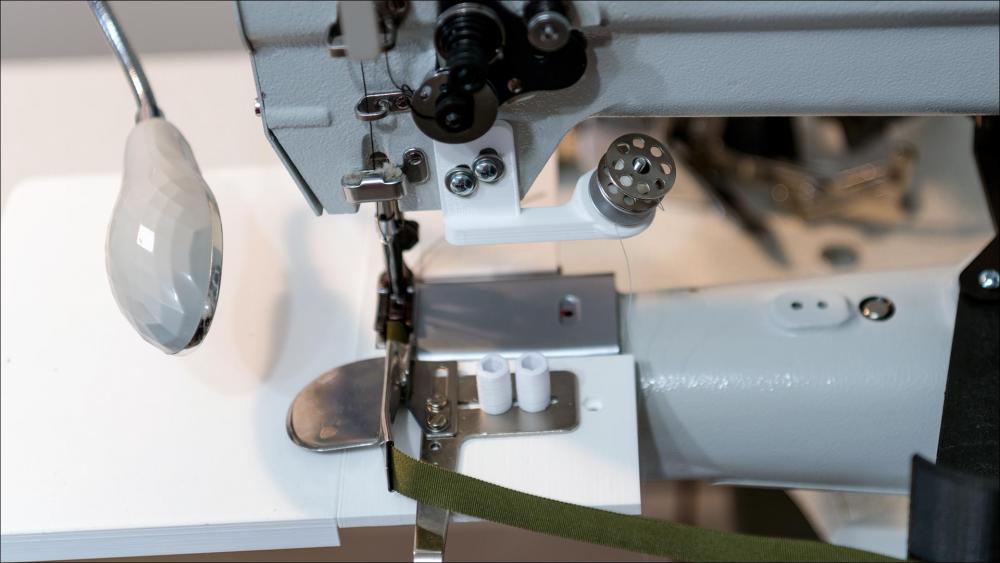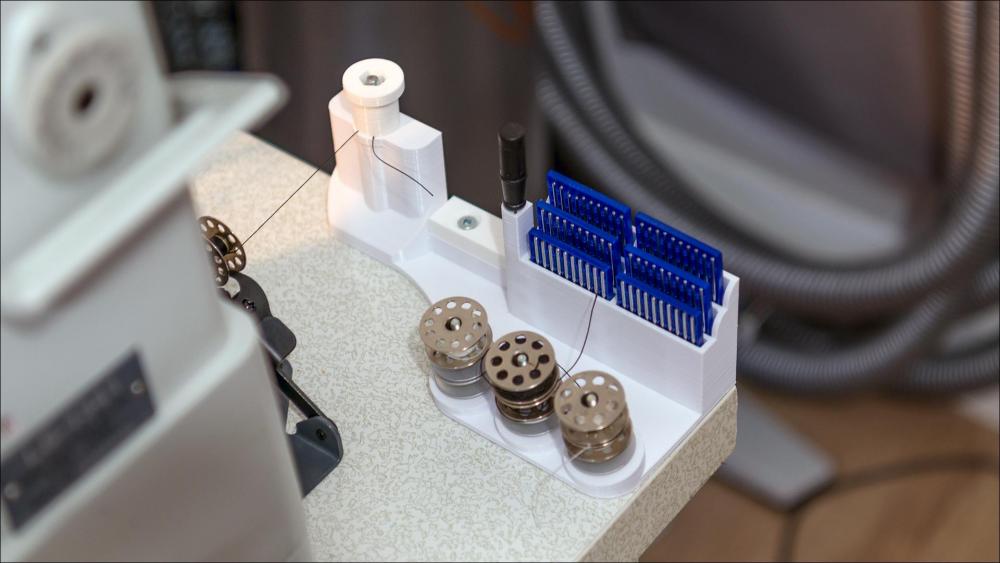
kgg
Contributing Member-
Posts
3,305 -
Joined
-
Last visited
Content Type
Profiles
Forums
Events
Blogs
Gallery
Everything posted by kgg
-
Ooops me to I forgot to mention I use V69, V92 and V138 in both the Juki 1541S and 1181N. Both machines came sewn off with V138 threaded top / bobbin out of the box even through the 1181N is only rated to V92. I figure I could push the top thread to V207 but keeping V138 in the bobbin without too much problem in the 1541S. kgg
-
In my opinion it is all going to depend on what and how thick as well as the thread size you are planning on using. The main reason I got the 1181N was that for the 1541S to do lighter stuff I was spending 15 to 30 minutes dumbing it down if I didn't it would have a tendency to tear stuff up. Then I would have to spend about the same time resetting the 1541S. If you are going to be doing mostly (90 percent) heavy / thick stuff go with the 1541S or larger otherwise get the 1181N. Eventually you should get a second machine. Whatever you decide, if it is possible, try a sample of what you are planning on sewing on both machines see which one works best. There are couple of good video's showing how the 1541S does on thin stuff you should at. kgg
-
Hi Smithi, welcome to the forum. I have both the Juki DU-1181N as well as the Juki DNU-1541S. The 1181N is a much lighter machine then the 1541S. Personally I would find a 1541S not a 1541 where the "S" destination refers to it having a safety clutch. Better still would be a 1508. To a youtube search for Juki 1541 vs 1181 and Juki 1541 vs 1508. Just my opinion. kgg
-
I like the cheap disposable thread snips as nylon Rigging said when they are dull toss them, for stuff cutting stuff I really don't care about how the cut looks because it is going to be covered I use cheap dollar store scissors and for the good stuff that needs to be cut nice and proper, I use 440 stainless steel or Titanium scissors. I think it really comes down to your budget, intended use and how long you want to get out of them. My good scissors were expensive but they are 20 years old and back then they were really expensive. kgg
-
Sewing machine models for carpet binding/auto upholstery
kgg replied to Rachal's topic in Leather Sewing Machines
Here in Ontario, Canada the Pfaff's aren't very common and can be expensive to repair. If I am not mistaken the Pfaff 145 and 545 are older versions of the 1245. I have a German casted 1245 706/47 walking foot with a clutch motor that I am planning on selling. kgg -
Sewing machine models for carpet binding/auto upholstery
kgg replied to Rachal's topic in Leather Sewing Machines
On the less expensive side depending on how much your carpet pile will compress and the type of backing on the underside of the carpeting. Your portable sewing machines may do the job and fairly inexpensive on the used market. Those that may work could possibly be your Sailrite LZ (USA), Techsew 611(Quebec) , Reliable Barracuda (Ontario) but check with the suppliers and if possible test drive with a piece of carpet using the thread and binding you are planning on using. kgg -
To add to Constabulary links: Mitsubishi DU-105 -- Very Clear https://www.google.com/url?sa=t&rct=j&q=&esrc=s&source=web&cd=&ved=2ahUKEwicsf2MqNHtAhWoElkFHbVLBe8QFjACegQIBhAC&url=https%3A%2F%2Fwww.supsew.com%2Fdownload%2FMitsubishi%2FMitsubishi%20DU-100%2C%20-120%20Instruction%20Manual.pdf&usg=AOvVaw3uTFUneRig7cFyUxoVSoNu Singer 211g 155 -- Very Clear version better photo's https://www.google.com/url?sa=i&url=https%3A%2F%2Fwww.supsew.com%2Fdownload%2FSinger%2FSinger%20211G155%2C%20211G156%20Service%20Manual.pdf&psig=AOvVaw2fFVFzIkTEfn8WS-q4xSKd&ust=1608166909268000&source=images&cd=vfe&ved=0CAMQjB1qFwoTCKCC392m0e0CFQAAAAAdAAAAABAI For a start stop turning the main pulley wheel away from yourself should only be turned away from yourself in small amounts to reset the safety clutch or help clear a jam of thread at the hook otherwise it could cause timing issues. The Mitsubishi and Singer manuals should help you with a lot. From the Mitsubishi Manual: Stitching length can be adjusted with the stitch regulator push button on the bed and the balance wheel. 1) Pushing the push button down and turn the balance wheel slowly to ward you. 2) So that the push button goes down further and the balance wheel running. (I guess they mean free wheeling.) At this time set the graduation of the dial on the Balance Wheel with the marking on the arm and then release the push button shown in Fig. Caution: NEVER depress the button while the machine is running. Out of curiosity what size of needle are you using as it appears you are using V46 thread.
-
Some of you may know that I like my 3d printers for this hobby and other stuff. I figured I share some of my experiences those planning on getting into it or planning on upgrading equipment. I first purchased a Prusa i3 MK3S it came not assembled to save a few hundred in assembly costs. That in itself was a 12 hour assembly journey. Used it for about 120,000 meters and started to notice some minor print changes and decided to get a second machine so we bought another Prusa i3 MK3S and a Bear upgrade kit along with the Bontech extruder assembly. That assembly made the first look like a walk in the park, definitely not for the faint of heart. It took about 40 hours to assemble. Thankfully we had the Bear Prusa Upgrade completed as we had a catastrophe fan failure at about 160,000 meters on the first machine so we then replace it with a whole new Bontech Mosquito extruder. We got about 20 hours of use and then had a stepper motor support failure. Which we suspect was why we were having previous minor print changes related to belt tension. Upon examination of the failed part it was obvious Prusa cheaped out on proper infill needs for that stress location. We printed on the Bear Prusa Upgrade a much better stepper motor support and for the other side a better tensioner mechanism. We installed a 1mm nozzle in the new Bontech Mosquito on the older Prusa i3 MK3S machine. What a difference in print time. As a comparison we printed a simple 6.5 mm thick part on the Bear with .4 mm nozzle and the same part on the rebuilt Prusa i3 MK3S. The Bear Prusa took 10 hours 58 minutes to complete and the rebuilt Prusa i3 MK3S took 2 hours 58 minutes to complete. Does it ever lay down filament. That is a significant reduction in print time, saving 8 hours. Guess what is getting upgraded next on the Bear Prusa Upgrade. If you are planning on going the Bear Upgrade route, which I would strongly suggest, buy: 1) HiWin, not the chicom rails and linear blocks (H and C). Chicom are no where near as good. C were out of stock and had to mix in match 3 to get one 'good enough'. HiWin "just works". 2) Extruders are Bondtech Prussa Mosqutio Kits. Dont bother with the E3D v6 based Prusa upgrade kit. Not worth it. Go for the mosquito. Much better results. BUT pay for the SLS printed parts. MUCH better quality. For other details or links to parts drop me a note. Photo 1 --- Rebuilt Prusa i3 MK3S with the part showing the time. Photo 2 --- Bear Upgraded Prusa i3 MK3S and UPS in background for both machines. Photo 3 --- Rebuilt Prusa i3 MK3S new stepper motor support. Photo 4 --- Rebuilt Prusa i3 MK3S new belt tensioner support.
-
I figured I share how I finish the edge binding using a cylinder bed with regular folders made for flatbed machines. This way I can without any mechanical changes to the machine share binders from my flatbeds with the cylinder bed otherwise I would probably have to buy a new needle plate, presser foot, cover arm and use 90 angled folders at about $200 CA. Equipment: i) Kobe LS-1341 10" cylinder bed ii) V138 top and bottom thread iii) Mini 8" x 8" mini flatbed conversion table iv) 3/4" (19mm) raw edge binder made for flatbed machines which is inexpensive less then $20 CA The photos show 3/4" (19mm) edging on 3mm thick material, not perfect finish but will stop fraying. All comments welcomed. Stay Safe, kgg
-
I used a spray bottle of good auto de-greaser in combination with diesel fuel to get rid of the gunk in a Pfaff with good results. I used a couple of old toothbrushes to scrub those hard to reach dirty spots. Then basically gave it a good flushing / bath with regular sewing machine oil before doing a full oiling. Did most of the cleaning outside because of the diesel fuel. I have found diesel fuel when let to sit for a day to be a good fluid for freeing up seized parts. kgg
-
Backpack with piping
kgg replied to scrapyarddog's topic in Purses, Wallets, Belts and Miscellaneous Pocket Items
That is excellent work. kgg -
Yes, I had to get another 100 yd spool of 3/4 " Polyester Twill Tape to complete the edging of some 60 - 3' x 3' puppy incontinence pads. I still don't have my edging tape machine fully up and running. Price was reasonable at about $16.00 for the spool. Their complete list of products is at http://amefird.ca/products/ . I do like the A& E stuff they put some engineering into manufacturing a quality thread but you do pay for quality. kgg
-
Why not call American & Efird Canada they are not far from you and discuss your needs / wants. Their products are made in Canada as well as the US and they should have a thread to meet your needs like maybe their Sunstop line. Prices are good, delivery is fast and most importantly a quality / consistent product. My V138 thread and edging arrived in under 24 hours. kgg
-
Thanks dikman, I actually really like the little "Tinker" and the 3d printing helps me solve problems inexpensively on all my machines as well as my other interests. kgg
-
To help with broken thread in seams and reduce the thread from cutting through the material I would consider the seam construction possible use of a reinforcing backing material. Maybe using a semi flat or flat seam construction. Just a thought. kgg
-
Some other resources would be kijiji.ca for your province (used machines). I don't know how close these would be to your location but Longview Leather in Longview, Alberta carry the Cobra lineup, Mac 1 in Calgary, Alberta carry the Juki and Reliable lineup. I guess it depends on what you want to sew (thickness), what size of thread and of course the dollars you want to spend. I do agree that adding a flatbed attachment to a cylinder bed makes it much more versatile but each type of machine has a purpose. If you are sewing mostly items that are better suited to a cylinder machine 90% of the time and only need to occasionally use the flatbed feature then buy a New cylinder machine and later a Used flatbed machine. For me it was Flatbeds (Juki 1541S, Juki1181n, Pfaff 1245) first then Cylinder machines (Consew 223, Kobe 1341) somewhere in there I a got a Chinese Patcher. Stay Safe, kgg
-
I forgot to add that I added a removable table top (Black thing), main mounting plate, adjustable / removable nose support, 1 lb thread spool holder, a two light swivel lighting holder, scissors holder, better stitch length adjuster knob, a needle position indicator, higher top thread guide, relocated the main tensioner, repurposed the second tensioner as a bobbin tensioner and added a edge guide. This truly is a tinkers machine. Stay Safe, kgg
-
This is my Chinese Cobbler be readied for strip down to add a longer drive shaft and pulley which will be connected to a motor. The pictures may give you some ideas on adding some attachments.
-
I sometimes wonder there seems to be no rime or reason to it when ordering stuff, I guess it depends on where you are. I ordered a small fan, weighted about an ounce, for a rebuild on a 3d printer that was in stock from a Montreal dealer and at the same time ordered a new Mosquito hotend and extruder from Bontech out of Sweden. Guess what it took 6 days to get from Sweden and 10 days from Montreal. Ordered a 1 lb spool of V138 thread and a 100 meter coil of edging from American & Efird Canada Inc. in Toronto today and will it be here tomorrow if not Thursday at the latest. I am about 3.5 hours drive from either Montreal or Toronto. Go figure. Stay Safe, kgg
-
I think another factor would be the type of needle being used as vinyl can be a bit sticky along with how thick the vinyl is and the type of material as a backing. kgg
-
Thanks MtlBiker. I am terrible with using the drawer and on the last two machines I never even bother too install them or the thread spools. My experience is the drawer has a tendency to grow stuff to over flowing and when I want something it seems to magically disappear into a black hole. So for me it came down to what I use the most and where. Work area: Snips/Scissors, Needles, little screwdriver for bobbin tension and needle replacement, bobbins always need to be at the ready and close at hand. Storage area for me is at the wheel side of the machine so I need thread for the machine and bobbin, bobbins, needles, and depending on the machine a place to store larger scissors / pinking shears. Tape folders / binders need to be kept with the binder tape spool platter while small nuts, screws etc. I keep in a wall mounted small storage tray unit. kgg
-
Thanks DonInReno. Each of my machines have a different main purpose so they get dolled up slightly different but with similar attachments. The main attachment that goes on all the machines is a hands free bobbin winder attachment that automatically cuts the end of the bobbin thread during the winding of the bobbin. One version is on this machine as well. It really is a simple gizmo. Notice the thread from the bobbin that is on the winder to the little sewing center on the side of the machine. kgg
-
Thanks dikman, don't like to be to far from a bobbin or needle. All my attachments I do 3D print them as it is a great poor mans format for prototyping. As we speak one of the printers is doing a new anti- vibration adjuster for the little table to prevent any possible vibration being transferred back into the machine. The front support on the table is really a waste and not necessary but just in case I put more then twenty pounds downward pressure. Next week I am planning on starting two new projects. One is for a full size table similar to the little one but quicker to install and the top will be made out of HDPE with the support structure being 3d printed. I know I'm impatient, the goal with the new version is to cut the install time down. The other one is going to be a left foot operated reverse gizmo. kgg
-
I went down the rabbit hole with making life a little easier / more convenient by adding a few attachments to my machines, Juki 1541S, Juki 1181n, Chinese patcher, Consew 223, Pfaff 1245 and my most recent machine, a Kobe 1341. Went to buy a Juki 1341 but had a little bit of a hard time justifying the price so I said I'd give the Kobe a shot and if I didn't like it I would sell the thing. I came home with a Kobe 1341 which really is an old Juki 341 casing. So far it seems to do a decent job. The machine came with a table, servo motor, thread stand, knee lift and foot lift. The way I have them listed is how I rate my machines and at present the Kobe is next in line after the Juki 1181N but time will tell. Like most cylinder bed machines it needed some additions to make life easier. So me being me and my time is free I designed / built / tested a few attachments. Since I am always misplacing / knocking off the table scissors and losing stuff in the black hole or more commonly known as the sewing machine drawer I had to add a few items. I added: i) an angle adjustable scissors holder / needle holder/ screw driver / bobbin holder attachment to the top of the machine, photo K3. Holds two bobbins, a screwdriver, one flat of needles and scissors. ii) a two bobbin holder closer to the cylinder arm, Photo K9. iii) a small accessory center to the wheel side of the machine photo K5. It holds 9 bobbins, a screwdriver and 6 flats of needles. iv) what I think is a better three thread spool holder, photo K19. v) a 8 " x 8 " table top that installs in under two minutes that is custom fitted to the head and attaches with three screws to the machine. This allows me to use the tape folders from my other machines, photo K18. I will add the photos in additional posting. Stay safe, kgg vi) The table top lead me to designing a almost zero resistant binder tape holder with self centering guides that can be utilized as well for cording. The tape holder can accept easily 12 inch coils of 2 inch binding, photo K7, K8. To keep the resistance to a minimum and constant the spool of tape and or cording actually spins on a ball bearing race base rather then the machine dragging the tape around a stationary platform. The main goal in all the attachments was "No" holes to be drilled in the machine or table top and be quick release. Any and all comments are welcomed.





